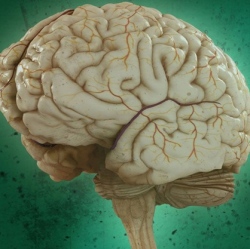
The capsule tackles the disease by targeting Abeta proteins, also known as amyloid beta, which build up and form toxic plaques in the brain. One way of dealing with the plaques is to "tag" the harmful protein cells, instructing the immune system to attack them, preventing the plaques from building up in the first place.
Achieving that goal can be difficult, and such treatment currently requires regular vaccine injections, which have been known to cause undesirable side effects. The EPFL researchers’ method addresses those issues, providing a single treatment that’s able to work over extended periods of time, and without side effects.
The idea is fairly simple, rather than repeatedly injecting antibodies into the patient’s system, the researchers worked on a method that uses a single capsule which is implanted under the skin to provide a steady flow of treatment.
The tiny capsule, known as a macroencapsulation device, consists of two permeable membranes connected via a polypropylene frame. Measuring 27 mm (1 in) in length and 1.2 mm (0.05 in) thick, the capsule is biocompatible and contains hydrogel, which facilitates cell growth. The cells that reside with the device are genetically engineered to produce antibodies that recognize and target the protein, instructing the immune system to destroy it.
The membranes of the capsule also play an important role, shielding the cells inside from being attacked by the host’s immune system, while allowing them to interact with surrounding tissue to get the required nutrients. As the cells are protected from the patient’s immune system, a single donor can provide cells for multiple patients.
The results from tests in mice were hugely positive, with the sustained antibody production preventing the formation of amyloid beta plaques in the brain.
The findings are very promising, and could signal a new path to Alzheimer’s prevention. It is however worth noting that the research is still in the early stages, and that human trials would need to be conducted before its effectiveness could be confirmed and widespread use could be considered.
